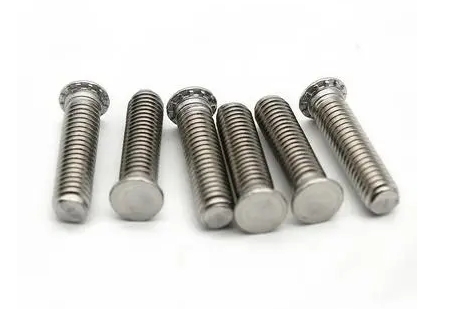Selection and Design Key Points of Pressed Rivets
Time:2023-11-20 13:38:31 Source:未知 Click:次
Among numerous fasteners, pressed rivets are widely used in fields such as automotive, electronics, electrical appliances, machinery, etc. due to their unique advantages. However, how to correctly select and use pressed rivets is a problem faced by many engineers and technicians. This article will introduce the selection and design key points of pressed rivets in detail, helping everyone better understand and apply this important industrial part.
Firstly, we need to understand what a pressed rivet is. A pressed rivet is a fastener that presses the head of the screw into the workpiece through cold or hot pressing, making it form a whole with the workpiece. Its characteristic is easy installation, firmness and reliability, which is suitable for various materials and shapes of workpieces.
When selecting pressed rivets, we need to consider the following factors:
1. Material: The materials of pressed rivets usually include carbon steel, stainless steel, aluminum alloy, etc. Different materials have different hardness and strength, choosing the appropriate material can ensure the durability and reliability of the rivet.
2. Specification: The specification of pressed rivets usually includes diameter, length, thread type, etc. Choosing the appropriate specification can ensure that the rivet can adapt to the size and shape of the workpiece.
3. Surface treatment: The surface treatment of pressed rivets usually includes galvanizing, chromating, painting, etc. Different surface treatments have different anti-corrosion properties and aesthetics, choosing the appropriate surface treatment can improve the service life and appearance of the rivet.
In designing pressed rivets, we need to pay attention to the following key points:
1. Thread design: The design of threads directly affects the installation and disassembly of the rivet. Generally speaking, the depth and angle of the thread need to be determined according to the material and thickness of the workpiece. The diameter and pitch of the thread also need to be designed according to the specifications and torque requirements of the bolt.
2. Head design: The design of the head needs to take into account the selection of installation tools and convenience of operation. Generally speaking, the shape and size of the head need to be determined according to the specifications and installation methods of the bolt.
3. Quality control: The quality of pressed rivets directly affects its performance and safety. Therefore, we need to conduct strict quality control over the production process to ensure that each rivet meets the design requirements and standards.
In general, the selection and design of pressed rivets are processes that need to comprehensively consider multiple factors. Only by selecting appropriate materials, specifications, and surface treatments, as well as reasonable thread design and head design, can we ensure the performance and service life of pressed rivets. At the same time, strict quality control is also an important link to ensure the quality of pressed rivets. We hope that this introduction can help everyone better understand and apply pressed rivets, improve production efficiency and product quality.


